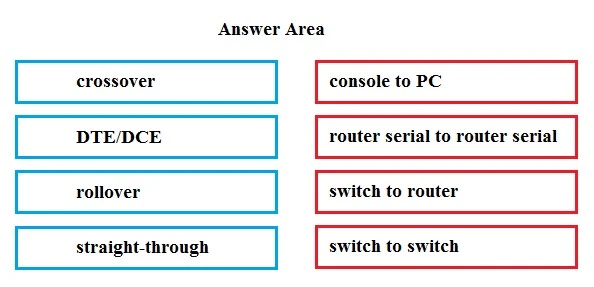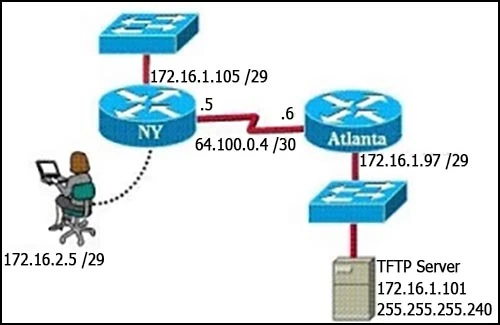
Which statement describes the effect of this configuration?

The configuration shown does not immediately add VLAN 10 to the VLAN database. Instead, the VLAN 10 configuration is committed and saved only when the router exits VLAN configuration mode. Until then, any 'do show vlan' command used while still in configuration mode might not show the new VLAN 10 as it hasn't been fully created and saved yet.



Based on the exhibit, the TFTP server has an IP address of 172.16.1.101 with a subnet mask of 255.255.255.240. This subnet mask translates to a /28 subnet, which does not align with the /29 subnet mask used on the connected routers (172.16.1.97/29). Due to this mismatch, the TFTP server likely cannot communicate properly within the network, causing the backup failure. Correcting the subnet mask on the TFTP server to match the /29 subnet of the routers should resolve the issue.